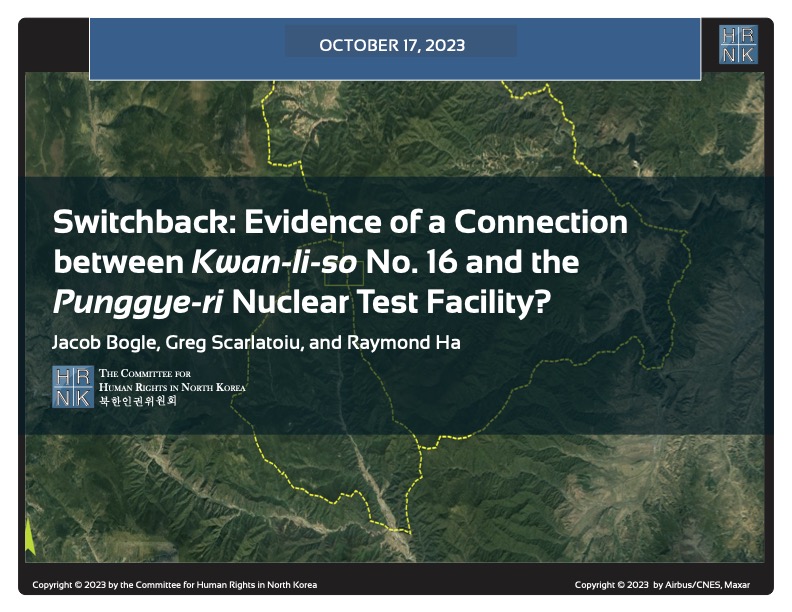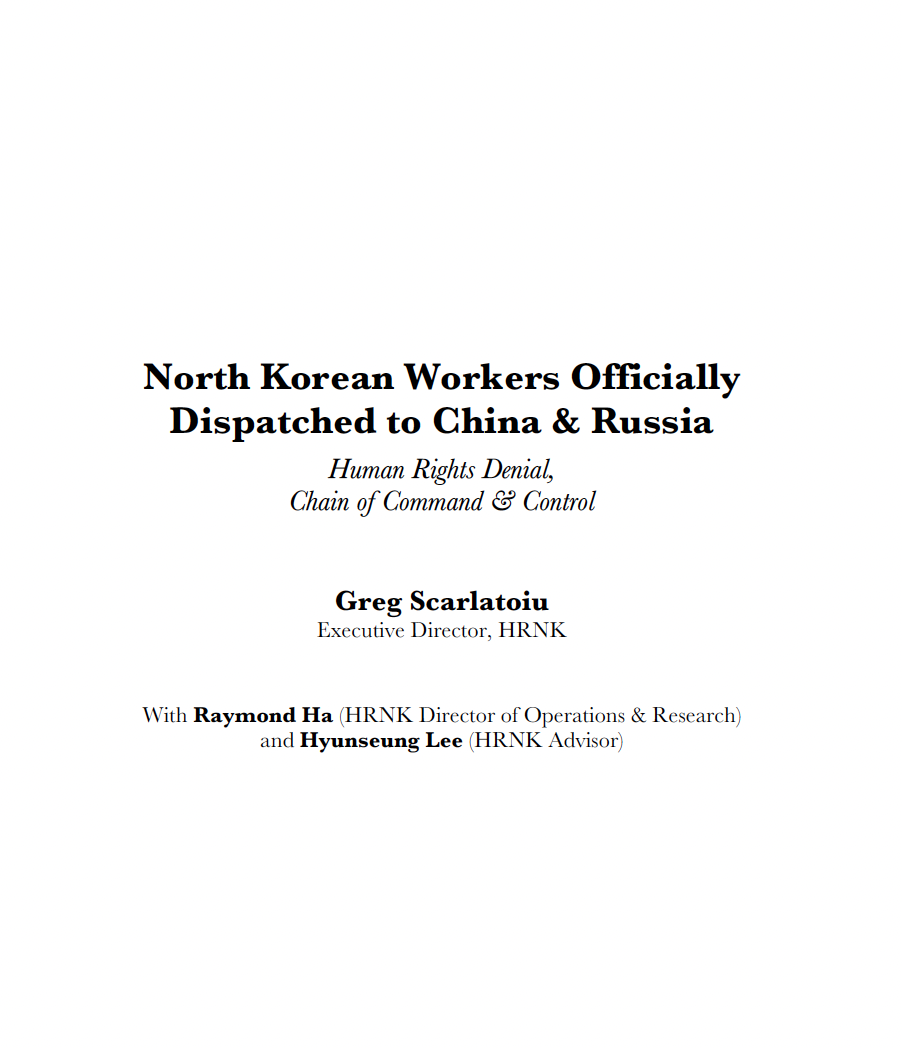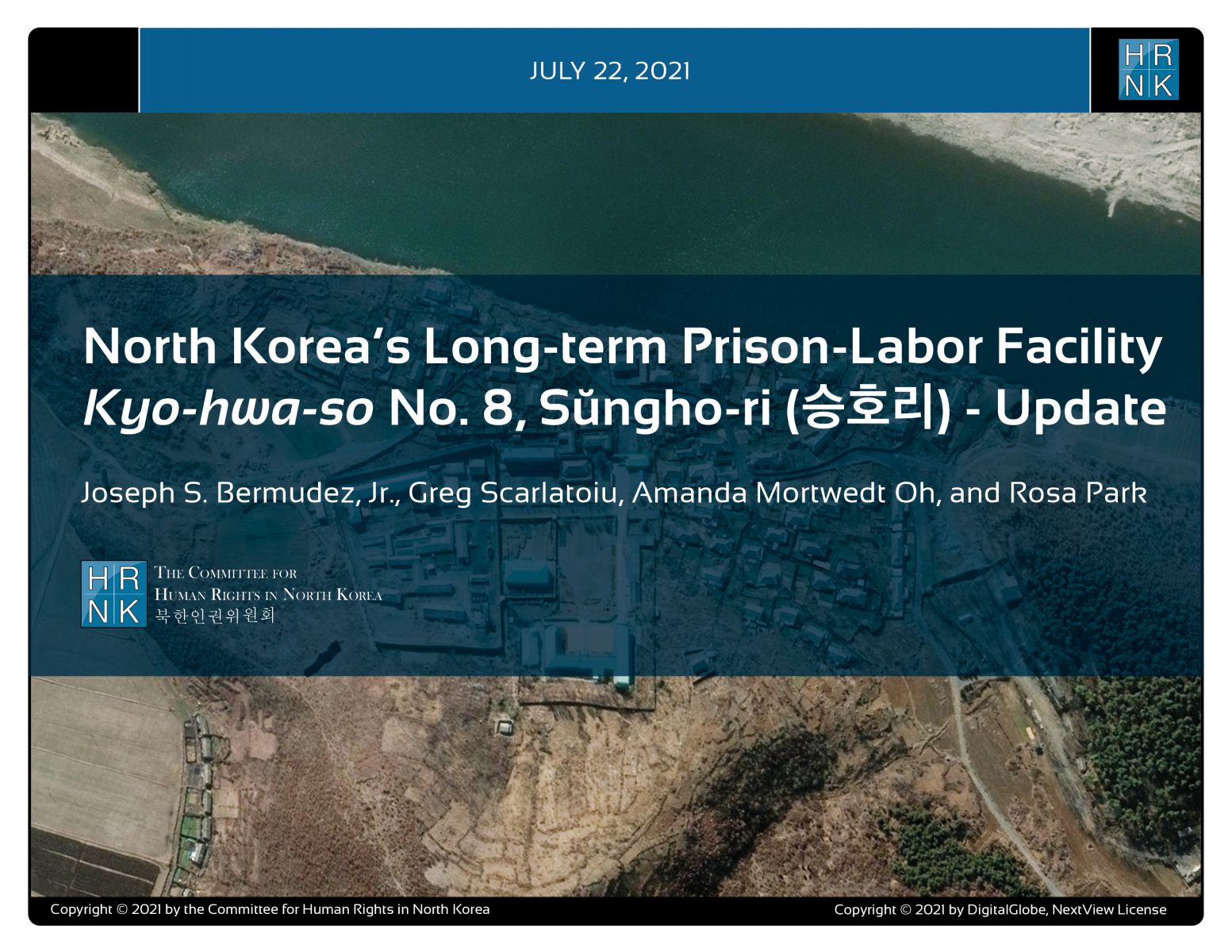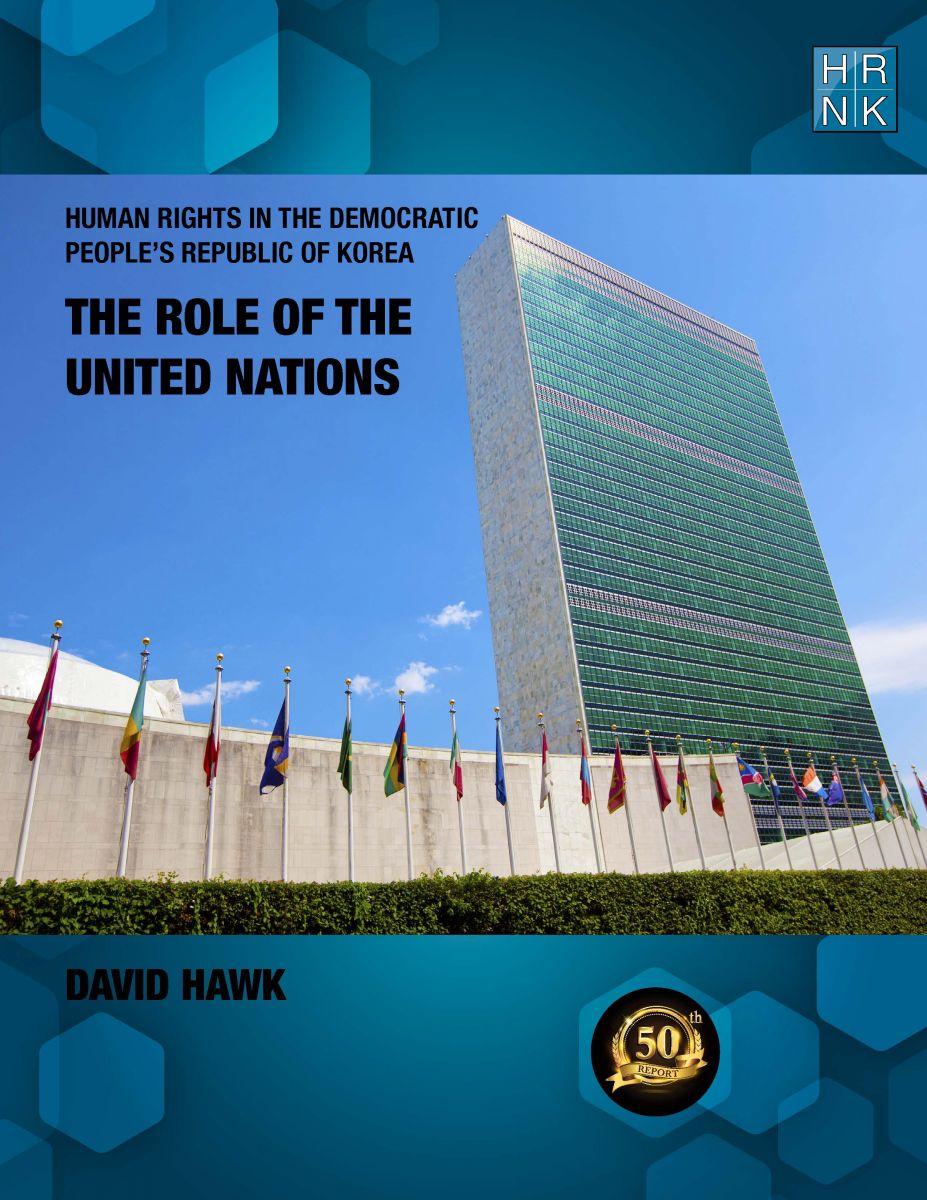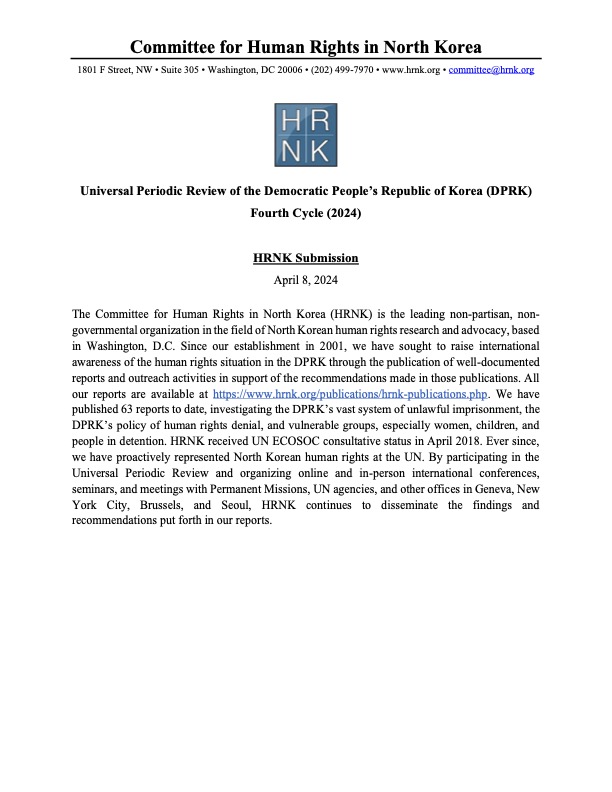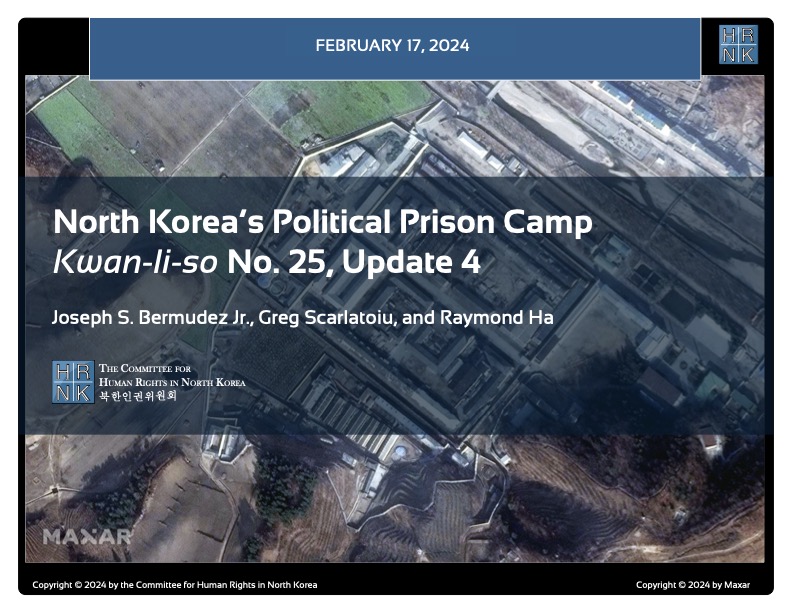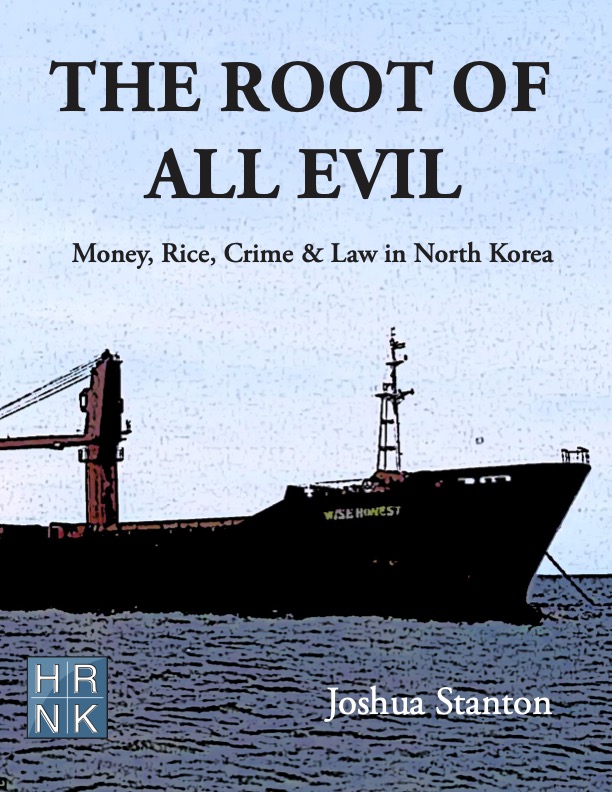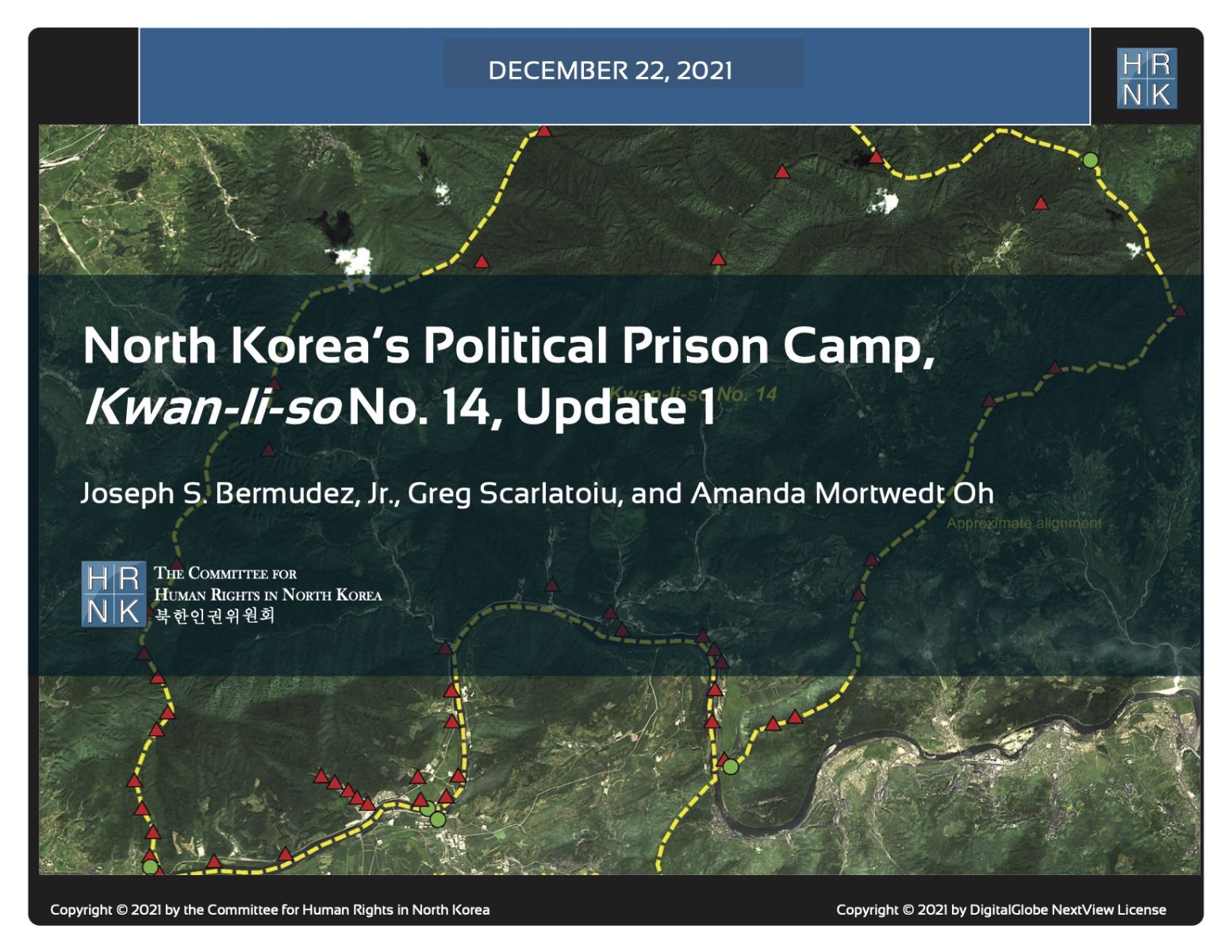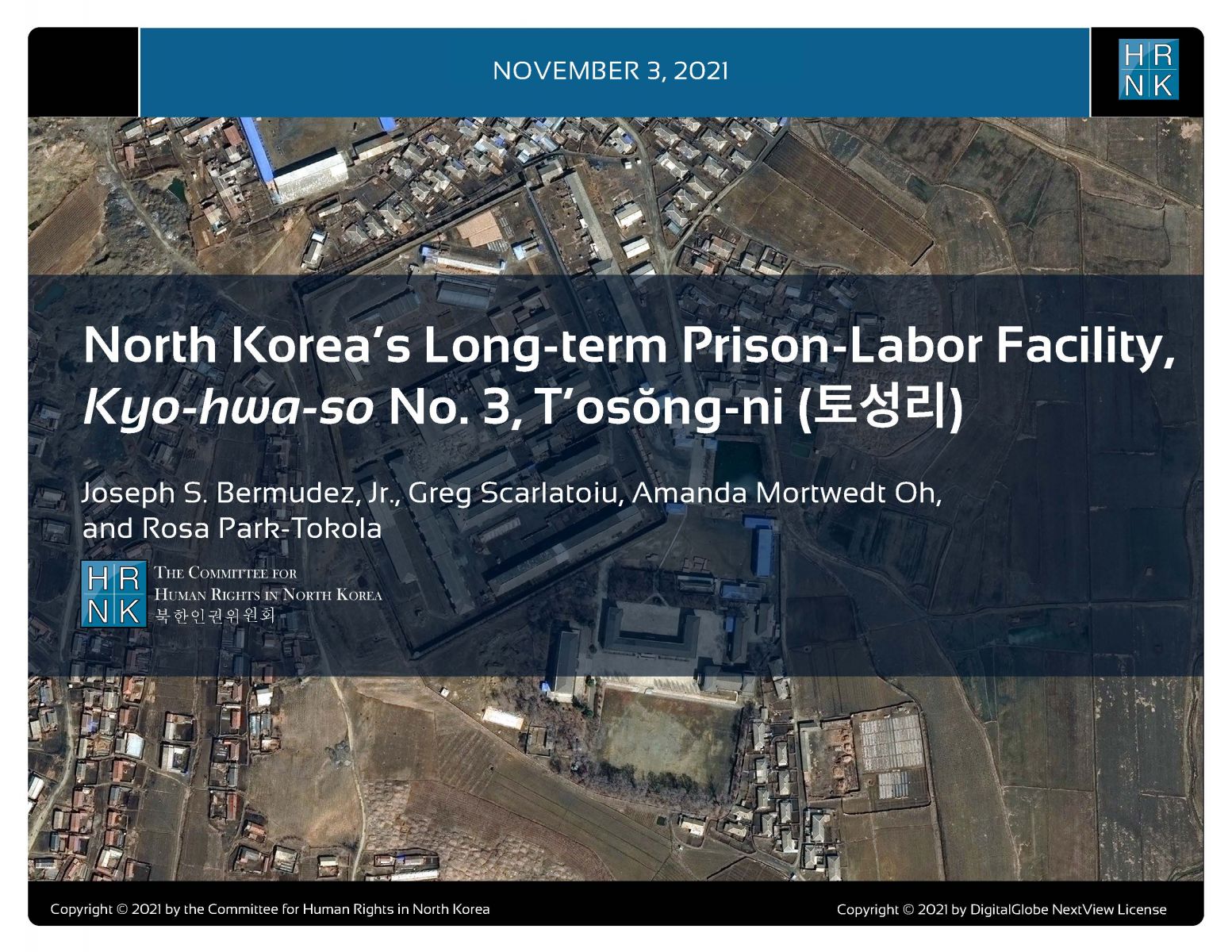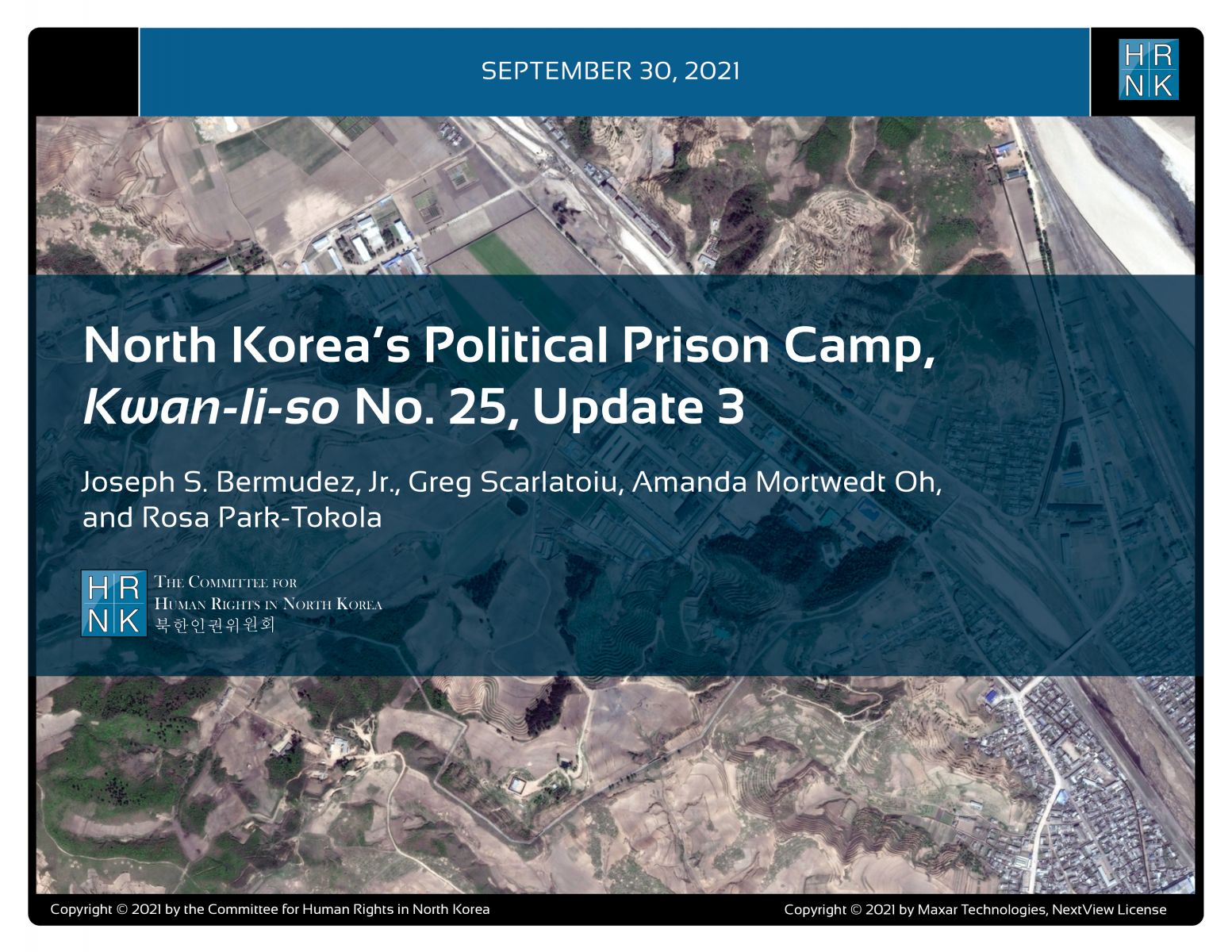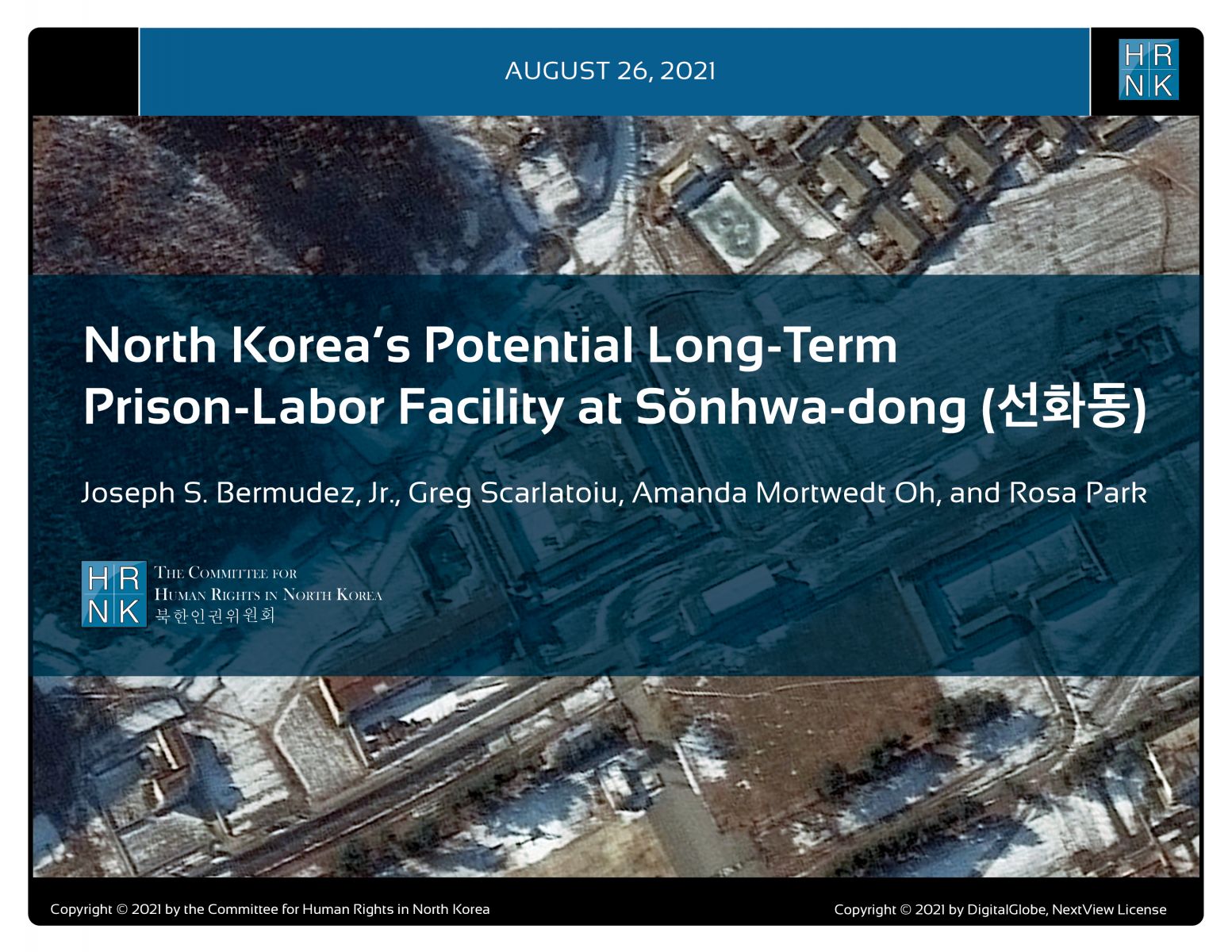August, 10th Division of Korean Peninsula - Dean Rusk and Charles Bonesteel, two young officers working on short notice, define American and Soviet occupation zones along the 38th parallel.
August, 15th Surrender of the Empire of Japan - The Empire of Japan surrenders to the Allies, ending WWII.
August, 17th Occupation of Korea - General Douglas Macarthur issues General Order No. 1, establishing the Allied and Soviet occupation of Korea.
August, 17th Bo-an-dae (local bodies in charge of law and order) placed under the Five Provisional Administration Bureau - Most North Korean organizations dedicated to internal security celebrate this date as their founding anniversary (North Korean Police State, 89).
December, 27th Moscow Conference - Representatives from the United States, United Kingdom, and Soviet Union sign a communiqué at the Moscow Conference, where they agree that Korea will be ruled by a single, independent government after a four-power trusteeship lasting as long as five years.
June, 8th US plans to Withdraw Troops from South Korea
August, 15th Republic of Korea (ROK) Founded with Syngman Rhee as its first President
September, 9th Democratic People's Republic of Korea (DPRK) Founded under Kim Il-Sung's rule
October, 10th North Korea Publishes Pamphlet on Soviet Aid - North Korea's Ministry of Culture and Propaganda publishes a pamphlet detailing the Soviet Union's significant assistance to North Korea. Two days later, Kim Il-sung receives a telegram from Stalin saying that he is ready to start diplomatic and economic relations between their countries. This foreshadows many important agreements between the two nations in the ensuing months.
December, 10th United Nations Adopts the Universal Declaration of Human Rights - as neither of the Korean governments is a member state at this time, neither is party to the treaty.
January, 19th Stalin Learns of Kim Il-sung's Request for Permission to Invade South Korea - The Soviet ambassador to North Korea reports that Kim Il-sung plans to ask Stalin for support in an effort to reunify the peninsula by force. Kim Il-sung makes his formal request for support on March 9th.
June, 25th Start of the Korean War - North Korea invades the South, starting the Korean War. The UN Security Council unanimously condemns the invasion in UNSC Resolution 82 (the Soviet Union boycotted the meeting to protest the representation of the Republic of China/Taiwan instead of the People's Republic of China).
June, 27th The United Nations votes to support South Korea - The UN Security Council passes Resolution 83, recommending member states provide military assistance to the Republic of Korea (South Korea). President Truman orders US forces to aid South Korea.
June, 27th President Truman orders an embargo on North Korea
June, 28th Abduction Order Given - The Korean Workers Party Military Committee issues an order to North Korean forces to abduct “Southern political, economic, and socially prominent figures, reeducate them, and strengthen the military front line with themâ€. An estimated 82,959 South Koreans were abducted.
August The Pusan Perimeter - North Korean forces succeed in conquering most of the Korean peninsula including Seoul. American and South Korean forces only control a small area around the city of Pusan.
September, 10th-19th Inchon Landings - UN and South Korean forces launch an amphibious attack at Inchon. The landings are a success and North Korean forces are subsequently forced to retreat north.
September, 25th Seoul Liberated - Seoul is liberated by South Korean and American forces.
October, 1st North Korea Retreats - North Korean forces retreat past the 38th parallel. UN forces cross the parallel in pursuit.
October, 19th Capture of Pyongyang - American and South Korean forces capture Pyongyang.
October, 25th China Enters the War - The People’s Republic of China enters the war, surprising American policymakers and turning the tide of battle.
December, 16th President Truman Declares National Emergency - Invoking the Enemy Act, President Truman terminates all American contact with North Korea and places an embargo on China.
1
1 Garson 1971, 16–18, 25–27; New York Times, 17 December 1950, A1
January, 4th North Korea Recaptures Seoul - Chinese and North Korean forces recapture Seoul.
February Battle of Seoul - American and South Korean forces slowly recapture Seoul.
March Ministry of Internal Affairs Reorganized - The Political Security Bureau was reorganized and replaced by the new Ministry of Public Security. The Ministry is headed by Pang Hak-se, will become known as the "North Korean Lavrentiy Beria" or "founder of the North Korea security police". An unknown number of North Korean citizens are rounded up by the Bureau and executed or incarcerated during the war (The North Korea Police State, 100).
April, 11th General MacArthur Dismissed - President Truman relieves General MacArthur of his command of forces in Korea.
May, 18th UN General Assembly Recommends an Embargo on North Korea and China - 35 members would pledge complete support, while eight Soviet bloc states reject the resolution as illegal.
2
July Stalemate - Although fighting continues, neither side gains significant ground as the battle lines stalemate around the 38th parallel.
July, 10th Negotiations begin - Armistice negotiations begin in Kaesong. They are suspended only five days later due to differences regarding the neutral zone.
July, 10th Parties Agree to a Military Borderline - Through negotiations the warring nations agree to a common military borderline.
2 New York Times, 17 July 1951, A4; International Law Quarterly, vol. 4, No. 3, 360
March Trial of South Korean Communists - Kim Il-sung begins his campaign to solidify his control with a four day show trial of twelve former leaders of the South Korean Workers Party, who held senior posts in the North Korean regime. All of the defendants "confessed," and ten were executed. Afterwards, Kim Il-sung turned his focus to purging pro-Soviet and pro-Chinese groups.
March, 29th Kim Il-sung Commits to Negotiations - A Soviet document written on this day reveals that Kim Il-sung had agreed to bring the war to an end through negotiations.
July, 27th Armistice Signed - An armistice is signed by the Chinese, North Koreans and UN, ending the Korean War and establishing the Korean Demilitarized Zone (DMZ). Syngman Rhee does not sign the agreement. Total casualties for the war are estimated as: United States 157,530; South Korea 233,870; China 900,000; North Korea 520,000; other nations 2,800; and 1,000,000 civilians.
October, 1st the United States and South Korea sign a mutual defense treaty
February, 14th-20th Krushchev Begins his "De-Stalinization" Campaign - Pro-Soviet and pro-Chinese (known as the "Yanan faction") groups become emboldened to challenge Kim Il-Sung's rule. Soviet-North Korean relations deteriorate.
April, 23rd-29th Third Party Congress Held - Kim Il-sung continues to solidify his rule by giving his allies an absolute majority in the Worker’s Party of Korea.
June-September August Faction Incident - While Kim Il-sung was visiting the Soviet Union and Eastern Europe in June and July, an anti-Kim coalition forms in North Korea, led by the Yan'an faction. Kim Il-sung and his allies successfully outmaneuver and purge their opponents, during the general assembly held on August 30th. China and the Soviet Union are concerned by the event, and subsequently sent delegations to North Korea. Although the delegation is accepted, it fails to reverse any of the purges of the August Faction incident.
May, 30th May 30th Resolution and Start of the Songbun System - The Korean Worker’s Party adopts the resolution that will be the foundation for the first large-scale purge in North Korea, lasting until December 1958. Approximately 2,500 people are executed and as many as 100,000 punished for political crimes. This was also the first campaign which sought to evaluate the political credentials of every North Korean adult. Known as Songbun, this system classifies each individual into one of three groups – “hostileâ€, “waveringâ€, and “coreâ€. The campaign also organizes the different classes in different geographical locations. The “core†class occupies Pyongyang, while those considered “hostile†are herded into special settlements in mountainous providences.
3
3 North Korean Police State, 104-5
May, 16th Military coup puts South Korean Gen. Park Chung-hee in power
September, 11th-18th 8th Plenum of the Korea Workers Party Adopts Resolution Allowing for a New Purge Campaign - Specially appointed groups (620 groups) undertake painstaking research on every adult North Korean’s family background and origin. Many are branded “counter-revolutionary" and executed.
4
4 North Korean Police State, 108
Resident Registration Project - North Korean authorities begin the year-long process of classifying every citizen as friend or foe of the regime (Songbun, 24).
July, 19th North Korea defeats Italy in the World Cup - North Korea upsets Italy during its first-ever appearance in the Football (soccer) World Cup by winning 1-0. North Korea goes on to lose 5-3 to Portugal in the quarter-finals.
November, 27th American Forces Ambushed at DMZ - An American patrol along the southern side of the DMZ is ambushed. This is one of the first events of the "Korean DMZ Conflict" or "Second Korean War" that lasts until 1969, during which there are a series of relatively low-intensity clashes between forces on the peninsula. An estimated 407 North Korean, 299 South Korean, and 75 American soldiers are killed in action during this period.
March, 7th Sino-North Korean Relations Sour - The Cultural Revolution in China concerns the North Korean leadership and harms relations. The Soviet embassy reports that North Korean propaganda had begun to criticize the communist parties of both the Soviet Union and China, claiming that the Korean Worker’s Party alone has taken the “correct positionâ€.
March, 22nd Lee Su-eun, vice-president of the North Korean Communications Department defects to South Korea
May Purge of the Kapsan Faction - At the 15th session of the Korean Workers Party’s Central Committee Meeting, members of the Kapsan group raise doubts about the wisdom of Kim Il-sung’s policies and lack of economic progress. Allegedly, the group was also secretly supporting Pak Kum-chol as Kim Il-Sung’s successor. Subsequently, Kim Il-sung succeeds in purging the faction. Professor Kihljae Ryoo, while at the Wilson Center, described Kim Il-sung’s authority as “unassailable†from this point onwards.
June, 3rd A North Korean Spy Boat Runs Aground in South Korea - During the ensuing firefight more than twenty North Korean agents are killed and one is captured.
January, 21st Blue House Raid - North Korean commandos infiltrate South Korea and attempt to assassinate South Korean President Park Chung-hee. The raid failed, and 30 out of the 31 North Koreans commandos are killed. 68 South Korean policeman and 66 South Korean soldiers were killed or wounded in the raid.
January, 23rd Pueblo Incident - North Korean forces capture the USS Pueblo, an American spy ship, killing one servicemen and taking the remaining 82 crewmen hostage for eleven months. For more information, see this Czech government report on incident.
June, 19th South Korean authorities order military drills for all high school and middle school students and women
October, 30th-November, 2nd Commando Incursions into Uljinn and Samchuck - Approximately 120-130 North Korean commandos infiltrate South Korea. Twenty South Koreans and 110-113 North Koreans are killed, while seven North Koreans are captured.
Purge of the Military leaders - Kim Il-sung purges a group of increasingly influential military leaders, led by Kim Chang-bong (Minister of National Defense) and Ho Pong-hak (Director of the KPA’s General Political Bureau). During the purges in the 1960’s over 6,000 people are estimated to have been executed and 70,000 sent to prison camps (North Korean Police State, 111).
April, 15th EC-121 Incident - Claiming a violation of its airspace, North Korean forces shoot down a United States Navy EC-121M Waning Star aircraft, killing all 31 aboard.
December, 11th Korean Air Hijacking - North Korean agents hijack Korean Air Lines flight HL-5208 taking fifty hostages.
March, 26th President Nixon Informs the South Korean Government of his Plan to Withdraw Troops - The President plans to withdraw 20,000 Troops from South Korea, reducing the total American force by one-third.
March, 30th Yodogo Hijacking - Nine members of the Red Army Faction, a Japanese communist militant group, hijack Japan Airlines Flight 351, taking 129 hostages. The hostages are subsequently released and the hijackers fly to Pyongyang where they receive safe haven.
5
November, 2nd-13th Fifth Party Congress - Kim Il-sung announces that the creation of the songbun classification system has been completed, dividing the population into three classes and 51 sub-groups. Kim Il-sung also begins the process of guaranteeing the succession of his son Kim Jong-il, who was also given the responsibility for organizing the Congress.
5 Taken, 35
July, 4th North-South Joint Statement - After a series of high-level meetings, North and South Korea agree on general terms for eventual reunification known as the July 4th Communiqué.
August North-South Korean Red Cross Sign Agreement - The organizations agree on five main points including confirmation of life and death of separated families, free visit and reunion, exchange of letters, reunion on free will and other humanitarian issues. Subsequent implementation of this agreement will prove problematic.
December, 25th New North Korean Constitution - Kim Il-sung announces the creation of a new constitution under which he will become President of the DPRK. The document also rearranged the regime’s internal security apparatus, creating the Public Security Department.
6
6 North Korean Police State, 114
January, 1st Kim Jong-il Calls a Meeting of General Political Bureau (KPA) Cadres - Kim Jong-il promotes the slogan of “Kimilsungization of the Whole Military†and underscored that succession (i.e. his own ascent to power) was the will of the Great Leader (Kim Il-sung). Around the same time, Han Yong-ok, director of the Ministry of People’s Armed Forces Security Bureau was purged and replaced by O Yong-pang.
9
April, 19th-20th Kim Il-sung Visits China - Kim Il-sung meets with Mao Zedong, Zhou Enlai, and almost certainly Deng Xiaoping. Kim reportedly requests Chinese assistance in another war to take the peninsula by force, but is rebuffed.
9 North Korean Police State, 119
March Kim Pyong-ha Commits Suicide - A key figure in the creation of the Kim Il-sung system and supporter of the hereditary succession, Kim Pyong-ha is purged and commits suicide as a result of the “15-persons incident.
11
September, 14th UN North Korea ratifies the International Covenant on Civil and Political Rights and the International Covenant on Economic Social and Cultural Rights - North Korea becomes party to the treaties, but opts out of certain optional protocols. The Regime has since systematically violated the terms they are bound by through these treaties.
11 North Korean Police State, 124
Koryo Tours Founded - Nick Bonner founds Koryo Tours, the first organization to lead western tourists on trips to North Korea. Over the next thirty years other organizations such as Pyongyang Project, and Young Pioneer Tours will follow suit as the regime permits more tourists for the sake of earning foreign currency. Some tourists will also later be detained for participating in “anti-regime activitiesâ€.
July, 1st-8th Yim Su-kyong visits North Korea - Yim Su-kyong, a South Korean pro-Pyongyang student activist, visits Pyongyang for the World Festival of the Youth and Students. North Korean propaganda promotes her as representative of South Korean youth, who admired and envied North Korea. Although Yim Su-kyong parrots the North Korean propaganda, scholar Andrei Lankov notes that she “behaved in a way which was unusual for her North Korean audienceâ€. As one refugee commented, “I used to believe that South Korea was a poor country, and a brutal dictatorship, but I changed my mind after Yim Su-kyong’s visitâ€.
United States Removes Tactical Nuclear Weapons from South Korea
13
North Korea establishes the Rajin-Sonbong Free Economic and Trade Zone, Its First Special Economic Zone (SEZ) - The SEZ is established as a part of the Tumen River Area Development Programme (TRADP), an effort to create a trade triangle between China, the USSR, and North Korea. The UN Development Fund approves a two-year $3,515,000 fund to get the program started. However, for the next 20 years, there would be virtually no progress on the ground.
September, 17th Admittance to the UN - North and South Korea are admitted to the United Nations under Resolution 46/1.
13 US Department of State, Background Notes—North Korea, 1996; Washington Post, 6 July 1994, A17; CSIS 1994, Appendix B, 1
Dr. Oh Kil-nam Returns to South Korea - Dr. Oh Kil-nam, the South Korean national who was lured to North Korea, returns to South Korea and launches a campaign to retrieve his family from North Korea.
January United States and South Korea Cancel Their Annual "Team Spirit" Military Drills in Order to Improve Relations with North Korea
January, 20th Joint Declaration Signed - North and South Korea sign a nuclear nonproliferation agreement, which also allows for the inspection of seven sites at the Yongbyon Nuclear Complex. No official date is set for the inspections.
March, 19th North and South Korea Sign an Agreement establishing a Joint Nuclear Control Committee (JNCC)
May Rumored coup d'etat Fails - According to a senior defector, the SSD uncovers a plot by a group of military officers to carry out a coup on April 25th during the parade commemorating the 60th anniversary of the founding of the KPA. The following month, Kim Jong-il restricts the security apparatus once again. Reportedly, he also orders that individuals who had studied in the Soviet Union be stripped of their power.
14
14 North Korean Police State, 126-8
March, 12th North Korea Announces that it is Pulling Out of the Nuclear Nonproliferation Treaty - North Korea announces it intends to withdraw from the treaty in order to defend “its supreme interestâ€. Almost three months later North Korea reverses course and does not withdraw from the treaty just hours before the pullout was to take effect. This announcement comes as American and South Korean forces are participating in “Team Spirit†drills.
April, 1st-2nd IAEA Announces that North Korea is not in Compliance with the Safeguards Agreement and Refers it to the UN Security Council (CSIS 1994, Appendix B, 2)
May, 29th North Korea tests missile - North Korea conducts its first successful midrange missile test, succeeding in firing a Nodong 1 missile into the Sea of Japan.
The North Korean famine or “Arduous March†begins - Following the collapse of the Soviet Union and North Korea’s decades of mismanagement, the country’s economic and social system collapses. The regime distributes its remaining resources according to the songbun social classification system, effectively deciding which segments of the population would starve (Songbun, IV). Between 600,000 and 1 million people perish (around three to five percent of the population) and an estimated 78 percent of North Korean children suffer from malnutrition. The famine also heralds an unprecedented number of North Korean refugees seeking refuge in the south.
15
February, 26th North Korea Grants Nuclear Inspectors Visas - Hours before the UN was to begin a process to impose a trade embargo against North Korea, the regime granted visas to nuclear inspectors. Less than a month later, North Korea announces that it will no longer allow inspections to proceed and threatened to withdraw from the Nuclear Nonproliferation Treaty. Two months later, North Korea again allows inspectors to return, but did not allow them to take samples, prompting the UN team to conclude that their inspection efforts had failed. The United States and South Korean cancel their “Team Spirit†military drills in an effort to bolster negotiations.
March, 31st North Korea Tests Cruise Missile
June 6th Corps Incident - The Security Bureau launches an investigation into the 6th Corps, executing officers and powerful provincial party and SSD officials. The 6th Corps is dismantled (North Korean Police State, 132).
June, 13th North Korea Announces it will withdraw from the International Atomic Energy Agency
June, 17th Former President Jimmy Carter Visits North Korea - The former president, acting alone, travels to Pyongyang and meets with Kim Il-Sung, coming to an agreement regarding the state’s nuclear weapons program.
July, 8th President Kim Il-sung dies - Kim Jong-il inherits power and institutes the doctrine of songun or “military first policyâ€.
October, 21st The United States, South and North Korea sign the - The United States and the Koreas sign an agreement to halt North Korea’s nuclear program.
15 Songbun, III;Haggard and Noland
Intensification Operation - The Public Security Department begins a campaign, ostensibly aimed at finding those responsible for the famine, to investigate senior party, government, and military officials. The campaign lasts until 2001 and results in the incarceration or execution of over 30,000 officials and their families. In 2001, Chae Mun-tok, chief of the political bureau of the Ministry of People’s Security, is executed and his department purged as a result of the campaign.
16
Purge of So Kwan-hi - The Party Secretary of Agricultural Affairs is purged and executed. The headquarters of the Public Security Department is also purged, although Paek Hak-nim is spared.
17
Turf Battles between the Public Security Department and SSD
February, 13th Hwan Jang Yop Defects to South Korea - Hwang, an architect of North Korea's Juche ideology and tutor of Kim Jong-Il, defects to South Korea on the way back from a trip to Tokyo. To date, he is the highest ranking defector to leave North Korea.
June KSYL Incident - The SSD acquires information that several senior functionaries in the Kim Il-sung Socialist Youth League (KSYL) Central Committee, including Choe Yong-hae, had been bribed by South Korean youth representatives at a conference in Beijing. In the ensuing investigation, the KSYL and SSD are purged and Jang-Song-taek and Kye Ung-tae fall out of favor.
18
16 North Korean Police State, 133
17 North Korean Police State, 134
18 North Korean Police State, 132
Hwanghae Steel Works Incident - The Public Security Ministry attempts to stop the theft of machinery from the Hwanghae Steel Works. After most of the stolen components are recovered, 19 people, including the party secretary and manager of the steel works are executed.
19
February, 25th President Kim Dae-jung Assumes Office - His administration marks the beginning of South Korea's Sunshine Policy towards the North, which involves increased engagement with the North Korean regime.
August, 31st North Korea Fires a Missile over Japan
October, 29th Mt. Kumgang Tourist Region Established - Hyundai and 
North Korea’s Asia-Pacific Peace Committee (APPC) sign an agreement founding the Mt. Kumgang Tourism Project. The Agreement comes after two trips to North Korea by Chung Ju-yung, founder of the Hyundai Group, and is hailed as a great achievement for President Kim Dae-jung’s Sunshine Policy.
December, 17th South Korea Sinks a North Korean Semi-Submersible Boat - South Korean forces sink a North Korean mini-submarine off its southern coast, killing all aboard.
19 North Korean Police State, 139
The North Korean Famine or “Arduous March†Ends - International aid helps end mass starvation, although hunger remains a major issue in North Korea.
June, 15th First Battle of Yeonpyeong - North Korean vessels cross the Northern Limit Line. In an effort to force the North Korean’s back, South Korean forces exchanged fire with the North Koreans, damaging two North Korean ships and killing 30 North Korean sailors.
July, 8th South Korea establishes the Hanawon Settlement Support Center for North Korean Defectors - The settlement center provides support and education programs for North Korean refugees. It also serves as a center where the South Korean authorities can assess if any of the defectors are spies or not legitimate North Koreans.
Kang Chol-hwan and Pierre Rigoulot release The Aquariam of Pyongyang: Ten Years in the North Korean Gulag.
February, 27th North Korea ratifies the Convention on the Elimination of All Forms of Discrimination against Women - Since its ratification, the regime has consistently violated the terms of the treaty.
June, 13th-15th First Inter-Korean Summit - South Korean President Kim Dae-jung travels to Pyongyang and meets with Kim Jong-il. A major achievement of South Korea’s Sunshine Policy, it later emerged that the government had paid $500 million to the North Korean regime in order to ensure the summit would move forward.
Relaxation of State Control - From 2001 to 2004, the regime relaxes its control, in part because the famine makes it increasingly difficult for the state to impose total control. Cell phones begin to appear and the regime even suggests that it might embrace reforms known as the July 1st measures.
20
North Korean Won is Unpegged from the USD - The regime decides to change the policy of pegging the currency at a rate of 2.16 won to the dollar. The 2.16 rate was apparently set to commemorate Kim Jong-il’s birthday (February 16th).
February, 27th North Korea ratifies the Convention on the Rights of the Child - Since its ratification, the regime has consistently violated the terms of the treaty.
May, 1st Kim Jong-nam Caught Trying to Enter Japan - Kim Jong-nam, the son of Kim Jong-Il and at the time his presumptive heir, is caught by Japanese authorities trying to enter the country with a fake passport from the Dominican Republic under the name Peng Xiong (meaning Fat Bear). He tells the authorities that he wanted to visit Tokyo Disneyland with his four-year-old son. This incident would see Kim Jong-nam lose favor with his father, who eventually chooses his younger son, Kim Jong-un, as his heir instead. Kim Jong-nam and his son later move to Macau, and occasionally express views opposing the regime.
October HRNK Founded to Promote Human Rights in North Korea
20 North Korean Police State, 140
June, 29th Second Battle of Yeonpyeong - North Korean vessels cross the Northern Limit Line and fire on a South Korean patrol boat, killing six and injuring nine. One North Korean boat catches fire and is allegedly destroyed.
July North Korea Institutes Economic Reforms - The regime takes steps towards monetization (abandoning the coupon/ration system), relaxing price controls, depreciating the currency, increasing wages, and adding more Special Economic Zones. The reforms fail to substantially change the economic situation in the country, while increasing inflation.
October, 16th North Korea Admits that it has been Proceeding with its Nuclear Weapons Program - The Bush Administration announces that North Korea has admitted that it has been secretly continuing its nuclear-weapons development program for years.
October, 16th KEDO Suspends Heavy-Fuel Deliveries - The Korean Peninsula Energy Development Organization announces that it will suspend the deliveries which are part of the 1994 Agreed Framework in response to Pyongyang’s acknowledgement of its uranium-enrichment program.
November North and South Korea Agree to open the Kaesong Industrial Complex - The agreement is seen as a major success for South Korea’s Sunshine Policy.
December, 27th North Korea Expels IAEA Inspectors - North Korea orders inspectors from the International Atomic Energy Agency to leave the country. They leave four days later.
HRNK releases The Hidden Gulag: Exposing North Korea's Prison Camps by David Hawk, credited for having placed the North Korean camps on the map
January, 11th North Korea withdraws from the Nuclear Non-proliferation Treaty (NPT)
February, 25th President Roh Moo-hyun Assumes Office
August, 9th First Six-Party Talks - The United States, China, Russia, South Korea, Japan, and North Korea hold negotiations in Beijing.
Relaxation of State Control Ends - The regime attempts to reassert its totalitarian control by banning cell phone ownership by private individuals, and cracks down on the selling and viewing South Korean media.
21
February, 25th-28th Second Round of Six-Party Talks - No substantive progress is announced.
April, 24th A train explodes in North Korea - The massive blast near the city of Ryongchon killed or injured an estimated 3,000 people and destroyed 1,850 homes as debris rained down for miles. The explosion occurred only hours after Kim Jong-Il passed through on a different train, leading to some speculation that the blast was an assassination attempt.
June, 8th UN Appoints a Special Rapporteur - The UN Commission on Human Rights (predecessor to the UN Human Rights Council) appointed Professor Vittit Muntarbhom, an international lawyer and university professor, to be the first Special Rapporteur on human rights in the Democratic People’s Republic of Korea.
June, 8th Liberty in North Korea (LiNK) founded - As of 2014, the organization had helped rescue 231 North Korean refugees.
June, 23rd-26th Third Round of Six-Party Talks - The United States presents a detailed proposal for halting North Korea’s nuclear weapons program.
October, 18th President Bush Signs the North Korean Human Rights Act into Law - H.R. 4011 is designed to promote human rights in North Korea and help refugees who manage to escape. The bill authorizes a total of $24 million per annum to be spent on the issue.
December Companies Begin Moving into the Kaesong Industrial Complex - The United States presents a detailed proposal for halting North Korea’s nuclear weapons program.
December Daily NK Founded - Han Ki Hong and the Network for North Korean Democracy and Human Rights found the online newspaper. Daily NK uses a series of informants inside North Korea to provide some of the most accurate, impartial information coming out of the reclusive country.
21 North Korean Police State, 140
Shin Dong-hyuk Escapes from North Korea
HRNK Releases Hunger and Human Rights: The Politics of Famine in North Korea by Stephen Haggard and Marcus Noland
March, 30th Violence Erupts After the North Korean Football Team Loses - Following a North Korean loss in the World Cup qualifier played in Pyongyang, fans throw bottles, stones and chairs on the pitch. Violence also erupts outside the stadium, where North Korean fans also prevent the Iranian players from boarding their bus. Riot police and soldiers are deployed to quell the violence.
September, 15th The United States Treasury Designates Banco Delta Asia SARL as a “primary money laundering concern†- The Treasury's Financial Crimes Enforcement Network (FinCEN) brands Banco Delta Asia a "willing pawn for the North Korean government" and issues a formal Section 311 notice of finding. This notice would, at least temporarily, scare away other financial institutions from doing business with the North Korean regime. The designation takes place alongside Operations Royal Charm and Smoking Dragon, targeting the smuggling of illicit products into the United States. IRA leader Sean Garland is also indicted for his role in a crime ring distributing North Korean counterfeit currency in Europe. These events would herald a shift in the nature of North Korean illicit activities (Illicit, 44).
September, 19th North Korea Agrees to Abandon its Nuclear Weapons Program - North Korea signs a Statement of Principles at the fourth round of the Six-party talks agreeing to abandon its nuclear weapons program and allow international inspectors into the country in exchange for security, economic, and energy concessions. However, the two sides almost immediately begin to argue over the precise interpretation of the agreement.
November, 9th-11th Fifth Round of Six-Party Talks - No major progress is made as the North Korean delegation focuses on the Banco Delta Asia designation.
Reorganization of Security Agencies - The Party’s control shifts again, with the Administrative Department under Jang Song-taek maintaining day-to-day control over the SSD and Ministry of People’s Security (North Korean Police State, 135).
HRNK Releases The North Korean Refugee Crisis: Human Rights and International Response by Stephen Haggard and Marcus Noland
HRNK Releases Failure to Protect: A Call for UN Security Council to Act in North Korea by DLA Piper LLP
June, 1st KEDO Terminates its Project to Build Two Light-Water Nuclear Reactors in North Korea
June, 4th-5th North Korea Fires Missiles Over the Sea of Japan - North Korea launch missiles over the Sea of Japan including the new Taepodong-2 model, which explodes after less than a minute. South Korea, United States, Japan, and China condemn the launch. The UN Security Council later passes Resolution 1695 condemning the missile launches, and demanding that Pyongyang return to six-party talks and suspend its ballistic missile activities.
October, 8th First Nuclear Test - North Korea detonates a nuclear device with an explosion yield of less than a kiloton. Six days later, the UN Security Council adopts Resolution 1718 demanding that North Korea refrain from further nuclear tests, return to six-party talks, and abandon its nuclear weapons. The resolution also imposes additional sanctions on the country.
October, 18th Japan Passes a North Korean Human Rights Act - The law establishes a North Korean Human Rights Week and creates an annual report to the Diet on North Korean human rights.
HRNK Releases Legal Strategies for Protecting Human Rights in North Korea by Skadden, Arps, Slate, Meagher & Flom LLP
July, 16th North Korea Shuts Down Nuclear Plant - IAEA head Mohamed ElBaradei confirms that North Korea has shut down and sealed its Yongbyon nuclear facility.
October, 2nd-4th 2nd Inter-Korean Summit - President Roh Moo-hyun travels to Pyongyang and meets with Kim Jong-il.
October, 8th Six-Party Talks Reach Agreement - The United States, Russia, China, and Japan agree to a tentative agreement to provide North Korea with approximately $400 million in aid including 50,000 tons of heavy fuel oil, in exchange for the regime allowing nuclear inspectors back into the country and beginning the process of dismantling nuclear facilities. The United States also pledged to begin the process of removing North Korea from its list of state sponsors of terrorism.
HRNK Releases Failure to Protect: The Ongoing Challenge of North Korea by DLA Piper
February, 25th President Lee Myung-bak Assumes Office - His administration marks the end of South Korea's Sunshine Policy towards the North.
June, 27th North Korea Demolishes Cooling Tower at nuclear reactor site
July, 11th South Korean Tourist Shot Dead at Mt. Kumgang - a South Korean tourist is shot dead after allegedly wandering into a military area at the tourist resort. After the incident, the tourist zone is promptly shut down. Nearly 1.95 million tourists had visited the tourist site since its founding in 1998.
September North Korea Resumes Reprocessing Plutonium - Claiming the Bush administration was failing to remove North Korea from its list of state sponsors of terrorism, the regime orders the IAEA to remove seals and surveillance equipment from the plant at Yongbyon and resumes plutonium reprocessing.
October, 11th United States Removes North Korea from its Terror List - The Bush administration decides to remove North Korea from its list of state sponsors of terrorism after North Korea allows nuclear inspectors back into the country and agrees to disable its nuclear plant.
December, 11th Six-Party Talks collapse
HRNK Releases After Kim Jong Il: Can We Hope for Better Human Rights Protection? By Kim Kwang Jin
March, 17th Journalists Euna Lee and Laura Ling are arrested by North Korean soldiers, while filming a documentary along the Chinese-North Korean boarder - Former President Bill Clinton will travel to Pyongyang in August in order to meet Kim Jong-Il and secure their release after 140 days in captivity.
April National Defense Commission Expands to Twelve Members - The expansion of the commission from eight to twelve members includes three leaders of the internal security apparatus into the otherwise exclusively military group: Jang Song-taek, Chu Sang-song, and U Tong-chuk.
22
April, 5th North Korea Test-Fires Rocket - North Korea launches a modified Taepodong-2 rocket, described as a “communications satelliteâ€. Eight days later, the UN Security Council issued a statement calling the test a violation of Resolution 1718. North Korea responds that it will no longer by bound by prior agreements reached at the Six-Party talks.
May, 25th Second Nuclear Test - North Korea announces that it has tested a second, more powerful nuclear weapon.
May, 26th North Korea Fires Three Short-Range Missiles near Japan
June, 12th New UN Sanctions - The United Nations Security Council unanimously votes to pass Resolution 1874, expanding sanctions against North Korea.
October, 1st HRNK Releases Lives for Sale: Personal Accounts of Women Fleeing North Korea to China by Lee Hae Young
October, 4th Premier Wen Jiabao Visits Pyongyang - China's Premier pledges closer economic ties and an economic cooperation package worth more than $200 million. This deal is related to the Changjitu Project, an official Chinese national strategy to develop the economy of Jilin providence, which borders North Korea. Upgrading and utilizing the port at Rajin, in North Korea, is highlighted as a key component of the project.
November, 10th Battle of Daecheong - A North Korean ship crosses the Northern Limit Line and exchanges fire with South Korean forces. One North Korean is killed and three are wounded.
November, 30th North Korea Launches a Surprise Currency Reform - The regime launches a currency reform aimed at cracking down on private markets. The reform throws the economy into chaos and even causes the government to undo some aspects of the reform.
December, 7th UN releases Universal Periodic Review - The UN High Commissioner for Human Rights releases its Universal Periodic Review on the Democratic People's Republic of Korea. North Korea becomes the first state to not accept any recommendation out of the 167 received.
December, 28th North Korea Bans the Use of Foreign Currencies
22 North Korean Police State, 136
March, 26th Sinking of the Cheonan - South Korean Navy corvette Cheonan sinks just south of the Northern Limit Line after an explosion in the ship’s stern. 46 out of 104 sailors on board are killed. North Korea denies being involved in the sinking. A subsequent South Korean-led Joint Civilian-Military Investigation Group (JIG), consisting of experts from Australia, Sweden, the United Kingdom, and the United States concludedsthat the warship was sunk by a North Korean torpedo attack.
April, 12th Chinese Tourists Allowed to Visit North Korea Following an Agreement Made by Chinese Premier Wen Jiabao
June, 15th-26th North Korea Participates in the World Cup - North Korea plays in the World Cup in South Africa, returning to the competition for the first time since 1966. They lose 2-1 to Brazil, 3-0 to Ivory Coast, and suffer a humiliating 7-0 defeat at the hands of Portugal.
November, 23rd Shelling of Yeonpyeong Island - North Korea shells Yeonpyeong Island, killing two South Korean civilians and two marines. South Korea returns fire. Both sides blame the other for starting the incident.
HRNK Releases the Second Edition of After Kim Jong Il: Can We Hope for Better Human Rights Protection? By Kim Kwang Jin
May HRNK Releases Taken! By Yoshi Yamamoto
June North Korea Announces the Creation of the Hwanggumpyong and Wihwa Islands Special Economic Zone
September, 8th ICNK Founded - The International Coalition to Stop Crimes against Humanity in North Korea (ICNK) is formed to promote the establishment of a UN Commission of Inquiry (COI). HRNK joins the coalition with over 40 other organizations.
December, 19th North Korea announces that Kim Jong-il is dead - Ten days later, Kim Jong-un is appointed commander of the armed forces and General Secretary of the Korean Workers Party.
February, 29th Leap Day Agreement - The United States and North Korea agree to a deal that would see a freeze on the regime's nuclear and missile activity in exchange for food aid. Two and a half weeks later, North Korea announces that it plans on launching a "satellite" in April, thus torpedoing the deal.
March Escape from Camp 14 Released - Blaine Harden releases Escape from Camp 14: One Man’s Remarkable Odyssey from North Korea to Freedom in the West. The book details the life of Shin Dong-hyuk, the only known refugee who was born in and escaped from a North Korea political prison camp.
April, 10th HRNK Releases the Second Edition of The Hidden Gulag: The Lives and Voices of “Those Who are Sent to the Mountains†by David Hawk. The conference, hosted by the Peterson Institute, turns out to be a landmark event, attended by more than 300, and hailed by a Washington Post Editorial as “unprecedented.†Special Rapporteur Marzuki Darusman calls for a mechanism of inquiry to investigate human rights violations in North Korea, in a message sent to the conference participants.
April, 12th North Korean Rocket Launch Fails - North Korea launches a rocket, claiming it is an attempt to put a satellite into orbit. The international community suspects it is actually a test of North Korea’s long-range missile technology. This launch effectively nullifies the Leap Day Agreement.
May, 4th Construction at Yongbyon Resumes - 38 North, a website run by the U.S. Korea Institute at Johns Hopkins University, releases analysis that shows that work has resumed at the nuclear facility.
June, 6th HRNK Releases Marked for Life: Songbun, North Korea’s Social Classification System by Robert Collins
June, 28th North Korea Announces the June 28th New Economic Management Measures (6.28 reforms) - The regime announces a number of reforms including changes to the size of work teams and the amount of produce farms can keep.
July, 19th HRNK Releases Coercion, Control, Surveillance, and Punishment: An Examination of the North Korean Police State by Ken E. Gause
August Chinese Company Denounces the “nightmare†of Doing Business with North Korea - The Xiyang Group, a Chinese mining corporation, blasts the North Korean authorities after they are kicked out of the country, losing control of the $37 million they invested in the country.
October, 22nd-December, 11th HRNK and DigitalGlobe, Inc. Release North Korea’s Camp No. 22 and North Korea’s Camp No. 22 – Update
December, 12th North Korea Successfully Launches Rocket - North Korea launches a rocket, which successfully puts a satellite into orbit and flies past the Philippines. The United Nations Security Council passes Resolution 2087 condemning the launch.
February, 1st UN Report Suggests there is Evidence of Crimes Against Humanity - Special Rapporteur Marzuki Darusman releases a report to the UN Human Rights Council detailing UN documentation and reports on human rights in North Korea. He concludes that these reports could constitute evidence of the Kim regime committing crimes against humanity.
February, 8th Hyeonseo Lee talks at TED Seoul - The North Korean refugee shares her experience living and escaping from North Korea, getting significant attention in the international press.
February, 12th Third Nuclear Test - North Korea tests a third nuclear device. Experts are concerned that the regime is making progress towards possessing intercontinental ballistic missiles capable of delivering a nuclear payload. Less than a month later the United Nations Security Council pass Resolution 2087 condemning the test and Resolution 2094 imposing additional sanctions.
February, 25th HRNK and DigitalGlobe, Inc. Release North Korea’s Camp No.25
February, 25th President Park Geun-hye Assumes Office
February, 28th Dennis Rodman Meets Kim Jong-un - He becomes the first known American to meet the young leader.
March, 21st Commission of Inquiry (COI) Established - The United Nations Human Rights Council establishes The Commission of Inquiry on Human Rights in the Democratic People’s Republic of Korea with a 47-member consensus.
March, 27th North Korea Shuts Down its Last Military Hotline to the South
April, 2nd North Korea Announces it will Restart its Mothballed Nuclear Reactor at Yongbyon in order to make Nuclear Weapons
April, 5th North Korea Advises Foreign Embassies to Consider Evacuating due to Rising Tensions in the Region
April, 8th North Korea Pulls Out of the Kaesong Industrial Complex (KIC) - North Korea announces that it will "temporarily suspend the operations" at the KIC, withdrawing all of its 53,000 workers from the industrial park.
April, 8th North and South Korea Restore Cross-Border hotline and Propose Talks - The proposed negotiations collapse three days later.
May, 18th-31st North Korea Launches Six Short-Range Missiles
May, 29th HRNK Releases the Second Edition of The North Korea Police State by Ken Gause.
May, 31st COI Appoints Commissioners - Commissioners Michael Kirby, Sonja Biserko, and Marzuki Darusman are appointed to the UN Commission of Inquiry (COI). North Korea rejects the COI.
June, 11th Joseph Kim Speaks at TED Seoul - The North Korean refugee shares his experience escaping from North Korea and his search for his lost family.
July, 15th North Korean Ship Stopped in Panama - Inspections reveal that the ship is carrying weapons from Cuba in violation of UN Security Council resolutions.
July, 28th South Korea Pledges $7.3 Million Worth of Humanitarian Aid Amid Hopes it would Restart Talks on the Kaesong Industrial Complex
August, 14th North and South Korea Announce Agreement to Reopen the Kaesong Industrial Complex
August, 20th-30th COI Holds Hearings in Asia - The UN Commission of Inquiry holds hearings in Seoul, South Korea and Tokyo, Japan. Over 40 witnesses testify including Shin Dong-hyuk.
August, 27th HRNK Releases North Korea's Hidden Gulag: Interpreting Reports of Changes in the Prison Camps by David Hawk.
October, 23rd-31st COI Holds Additional Hearings - The UN Commission of Inquiry holds hearings in London, England and Washington, DC. Experts on North Korea, including HRNK staff and board members, testify.
December, 9th Jang Song Thaek Purged - Jang Song Thaek, Kim Jong-Un's uncle and purportedly a key figure in the regime, is purged and later executed. Jang Song Taek led the regime's revenue generating operations dubbed the "CEO of North Korea, Inc.". Individuals or departments associated with Jang are also purged and/or executed.
March, 17th COI Submits Report - UN Commission of Inquiry submits its final written report to the Human Rights Council's 25th Session in Geneva.
March, 31st North and South Korea exchange artillery fire near Northern Limit Line - No one is injured as the shells only land in the water.
April, 15th HRNK Releases Illicit: North Korea's Evolving Operations to Earn Hard Currency by Sheena Chestnut Greittens
May, 17th Apartment Block Collapses in Pyongyang - Many are killed when a multi-story apartment block collapses. The North Korean media shows senior officials from the Ministry of People's Security and other agencies apologizing for the incident.
